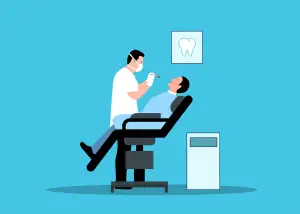Relieve Knee Pain with Our Top-Rated Knee Pain Patch: A Healthier Solution

Knee pain can be a common issue for many individuals, whether due to aging, injury, or underlying health conditions. To help alleviate discomfort and promote healing, knee pain patches have become a popular and convenient solution. These patches are designed to deliver targeted relief directly to the affected area, offering a non-invasive and drug-free alternative to traditional pain management methods. In this article, we will explore how knee pain patches work, their benefits, types available in the market, instructions for use, precautions to consider, and when it's essential to seek professional medical advice.
How Knee Pain Patches Work
Knee pain patches are designed to deliver active ingredients directly through the skin and into the affected area. These patches typically contain ingredients such as menthol, capsaicin, lidocaine, or methyl salicylate, which work to reduce pain and inflammation in the knee joint. Once applied to the skin over the painful area, the patch slowly releases these ingredients, providing targeted relief. The heat generated by some patches can also help improve blood circulation to the knee, further aiding in pain relief and promoting healing.
Benefits of Using Knee Pain Patches
Knee pain patches offer several benefits for individuals seeking relief from discomfort. Firstly, they provide targeted pain relief directly to the affected area, delivering medication through the skin and into the joint. This localized treatment can help reduce inflammation and alleviate pain without the need for oral medications that may have potential side effects on other parts of the body. Additionally, knee pain patches are convenient and easy to use, allowing users to continue their daily activities while receiving continuous pain relief. Moreover, these patches often provide a consistent dosage of medication over an extended period, ensuring a steady level of relief throughout the day. Overall, using knee pain patches can be a practical and effective way to manage knee discomfort and improve quality of life.
Types of Knee Pain Patches Available
When it comes to choosing a knee pain patch, there are several options available in the market. Some common types include:
1. **Heat patches:** These patches provide warmth to the affected area, helping to increase blood flow and relax muscles, which can alleviate pain and stiffness.
2. **Cold patches:** Cold therapy patches help reduce inflammation and numb the area, providing relief from acute pain or swelling.
3. **Medicated patches:** These patches contain ingredients like lidocaine or menthol that can provide localized pain relief by numbing the nerves in the area.
4. **Herbal patches:** Herbal ingredients such as capsaicin or arnica are often used in these patches for their natural pain-relieving properties.
5. **Magnetic patches:** These patches use magnets to create a magnetic field around the knee, which some believe can help improve circulation and reduce pain.
Each type of knee pain patch offers unique benefits, so it's essential to choose one based on your specific needs and preferences.
Instructions for Using a Knee Pain Patch
1. Clean and dry the area around your knee where you will apply the patch.
2. Remove the patch from its packaging and peel off the protective film.
3. Carefully place the patch over the affected area on your knee, ensuring it adheres well to the skin.
4. Press down on the patch to make sure it sticks securely in place.
5. Avoid getting the patch wet for at least a few hours after application to ensure effectiveness.
6. Most patches can be left on for up to 8-12 hours, but always follow the specific instructions provided by the manufacturer.
7. After use, gently remove the patch and discard it properly according to guidelines.
Following these instructions will help maximize the effectiveness of the knee pain patch in providing relief and support for your knee discomfort.
Precautions and Possible Side Effects
While knee pain patches are generally safe to use, it is important to take some precautions. Firstly, avoid using the patch on broken or irritated skin to prevent further irritation. Additionally, do not apply the patch over heat sources as this can increase the risk of skin burns. It is advisable to consult a healthcare professional before using a knee pain patch if you have sensitive skin or allergies to adhesive products.
Possible side effects of using knee pain patches may include mild skin irritation, redness, or itching at the application site. In rare cases, some individuals may experience an allergic reaction to the ingredients in the patch. If you notice any severe skin reactions such as blistering, swelling, or difficulty breathing after using a knee pain patch, discontinue use immediately and seek medical attention.
It is essential to read and follow the instructions provided with the knee pain patch carefully to minimize the risk of potential side effects and ensure safe usage for effective pain relief.
When to Consult a Healthcare Professional
While knee pain patches can provide relief for many individuals, there are certain situations where it is crucial to seek advice from a healthcare professional. If you experience persistent or severe knee pain that does not improve with the use of knee pain patches, it is important to consult a doctor. Additionally, if you notice any signs of infection such as redness, swelling, warmth, or fever at the patch application site, seek medical attention immediately. Furthermore, if you have underlying health conditions or are taking medications that may interact with the ingredients in the patch, it is advisable to consult with a healthcare provider before using the product. Remember, your health and well-being should always be a top priority.
In conclusion, knee pain patches offer a convenient and effective solution for managing knee discomfort. They provide targeted relief by delivering medication directly to the affected area, promoting faster recovery and improved mobility. With various types of patches available in the market, individuals can choose one that best suits their needs and preferences. However, it is essential to follow the instructions carefully and be aware of any potential side effects or precautions associated with their use. If knee pain persists or worsens despite using patches, it is advisable to seek medical advice from a healthcare professional for proper diagnosis and treatment. Ultimately, incorporating knee pain patches into your pain management routine can help alleviate discomfort and enhance your overall quality of life.
Published: 22. 04. 2024
Category: Health



